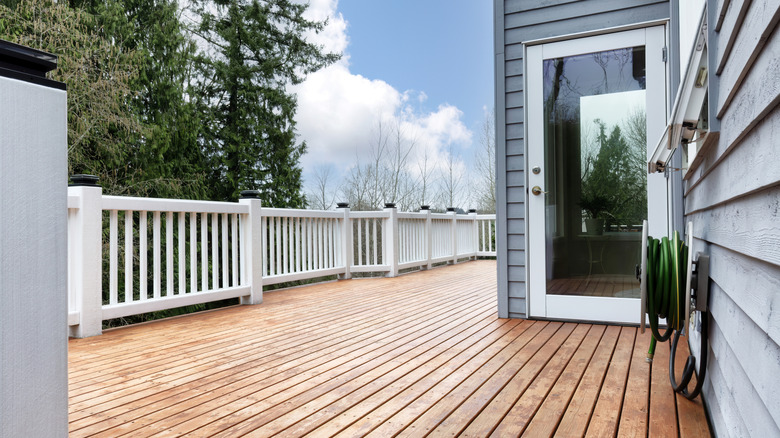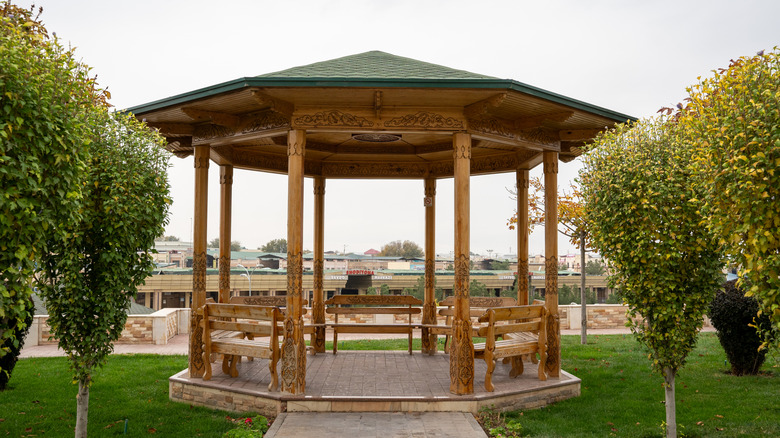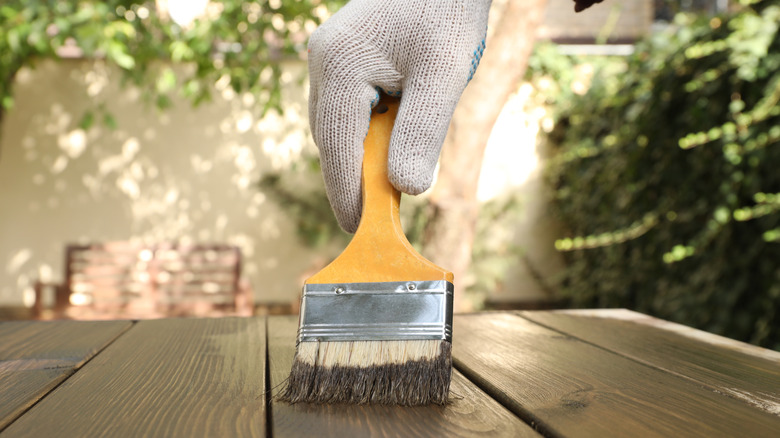The One Downside To Keep In Mind Before You Try Woodscaping
Everyone wants a nice-looking yard, but hardly anyone truly wants to spend the time and effort it takes to keep it up. One solution to this quandary is to replace some of your harder-to-maintain landscaping with "woodscaping," a popular term for incorporating wooden elements into your yard and garden. Woodscaping can be anything from decks to wooden paths to pergolas; if you can dream it up, chances are, there's a woodscaping element for it — try one of these ideas for building the perfect covered deck.
However, wood isn't naturally weatherproof or immune to age, so there is a downside to woodscaping that amateur landscape architects should keep in mind: It does still require some maintenance. While you may be cutting down on your time spent mowing and watering, woodscaping upkeep can take some time out of your busy schedule. You may want to consider how woodscape features will fare in the climate you live in. For example, in hotter areas of the U.S., you'll face problems like fading and warping, while woodscaping in wetter climates may fall victim to mildew. Take note of these details before you commit to woodscaping; you don't want to be stuck with a chipping pergola or rotting deck that you don't want to maintain.
Implementing woodscaping features
When deciding to woodscape your yard, consider the climate where you live. Is it rainy? You'll need to build with moisture-resistant lumber. If you live in a place where the sun beats down year-round, you'll want to make sure your stain can weather the rays. And if you live near the ocean, know that saltwater can quickly corrode wood, so look for lumber that is resistant to salt.
Next, settle on which woodscaping feature you'd like to build. A deck is a popular addition to an outdoor space, but be sure to obtain the proper permits; in some cases, it's illegal to build a deck on your own. If you're looking for something to shield a seating area from sun and rain, check out some tips on how to plan a perfect pergola, and here are some easy steps to creating a backyard boardwalk to protect shoes and feet from muddy grass. You can also incorporate less functional and more decorative wooden elements like signs, garden bed borders, and more.
Maintaining your woodscaping
To maintain woodscaping elements in your yard, you can follow guidance for properly caring for wooden decks. Be sure to regularly inspect the wood, keeping an eye out for holes, rusted hardware, exposed nails and screws, and warped or raised boards. You'll have to commit to deep cleaning your woodscaping at least once a year using a broom or stiff brush, store-bought or homemade wood cleaner, and a hose or a power washer.
Once your wood is clean, it's a good idea to re-stain and seal it. Spring is generally the best time to stain your wood landscaping features. You will have to sand the wood before re-staining and sealing, so make sure you're prepared to spend a few days working on your deck or pergola — choose a weekend with no rain in the forecast. Other maintenance tips for woodscaping include trimming back bushes or trees from the wood to discourage moisture and avoiding using rugs or fabrics made from natural materials.


